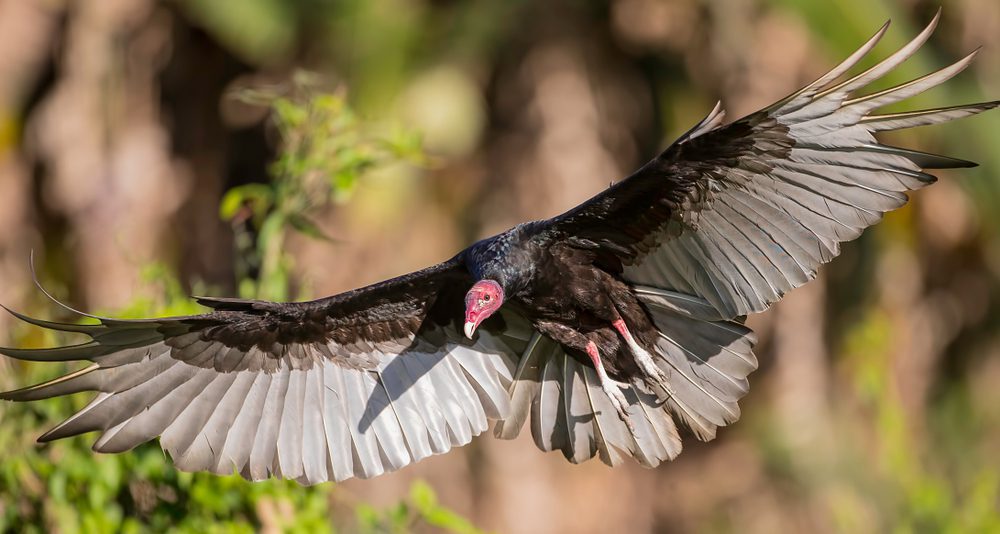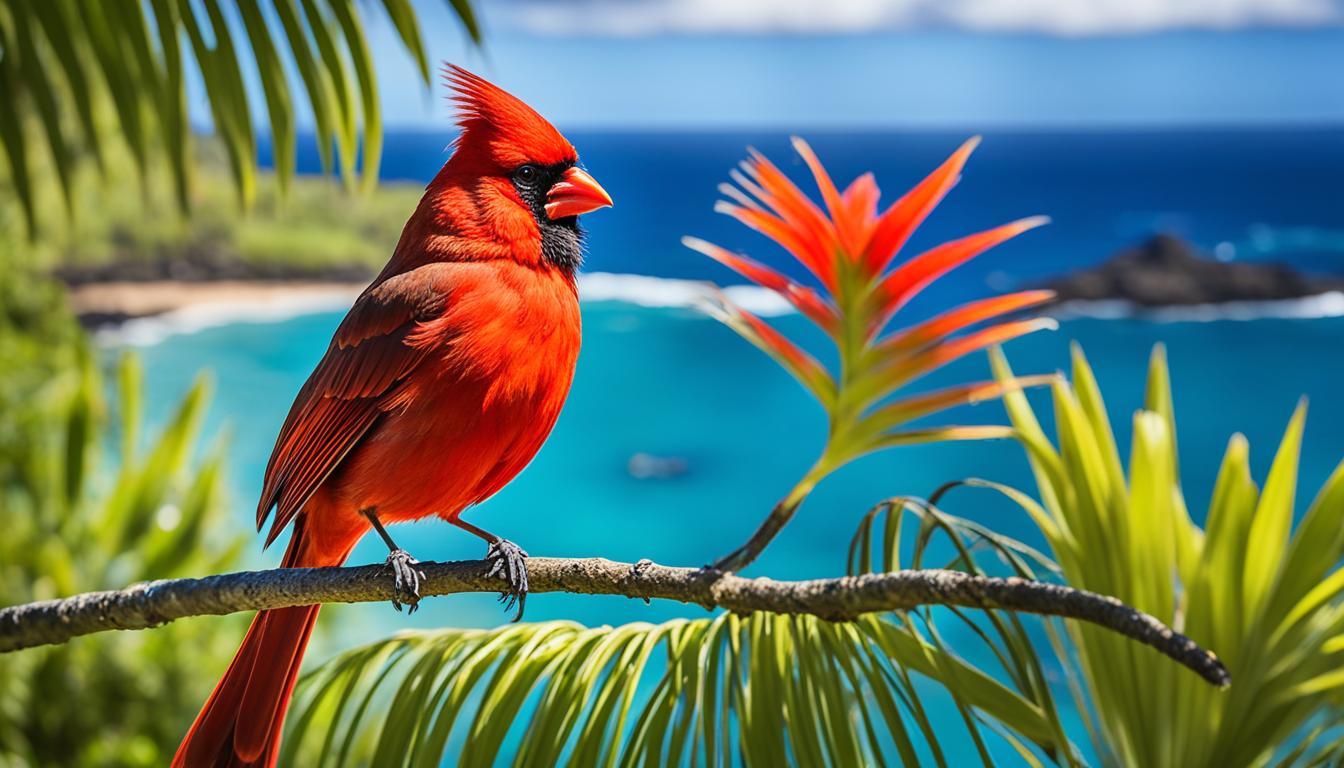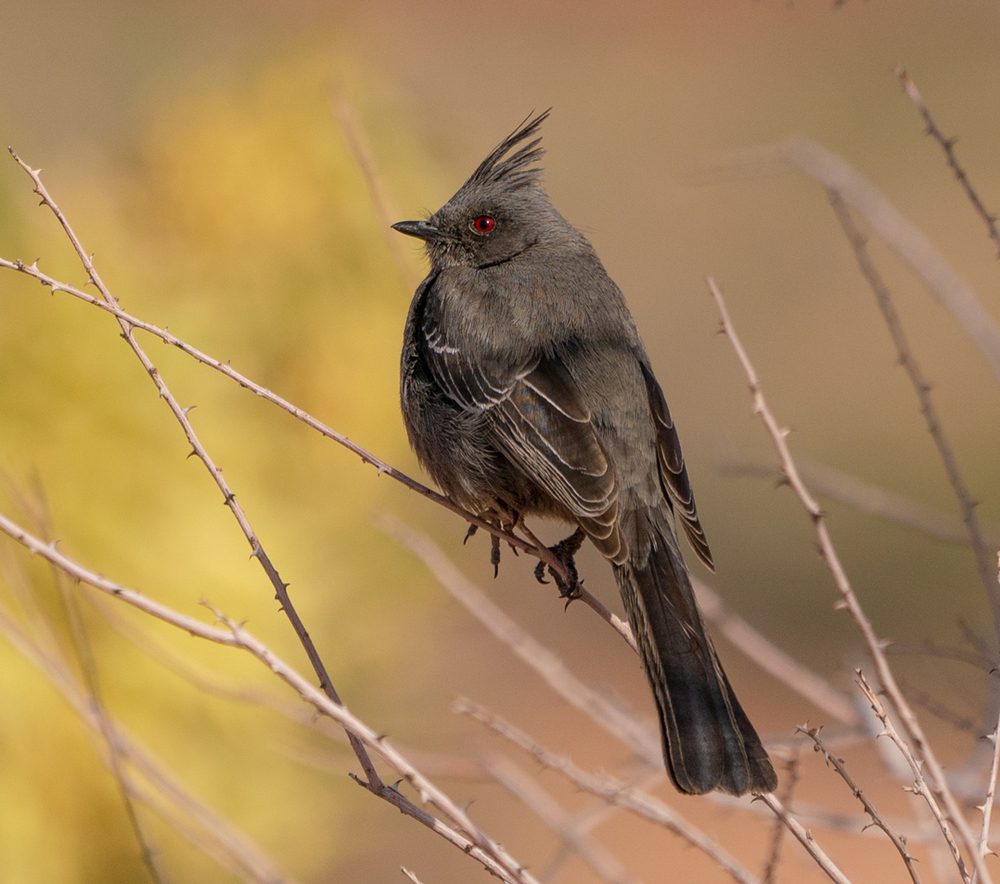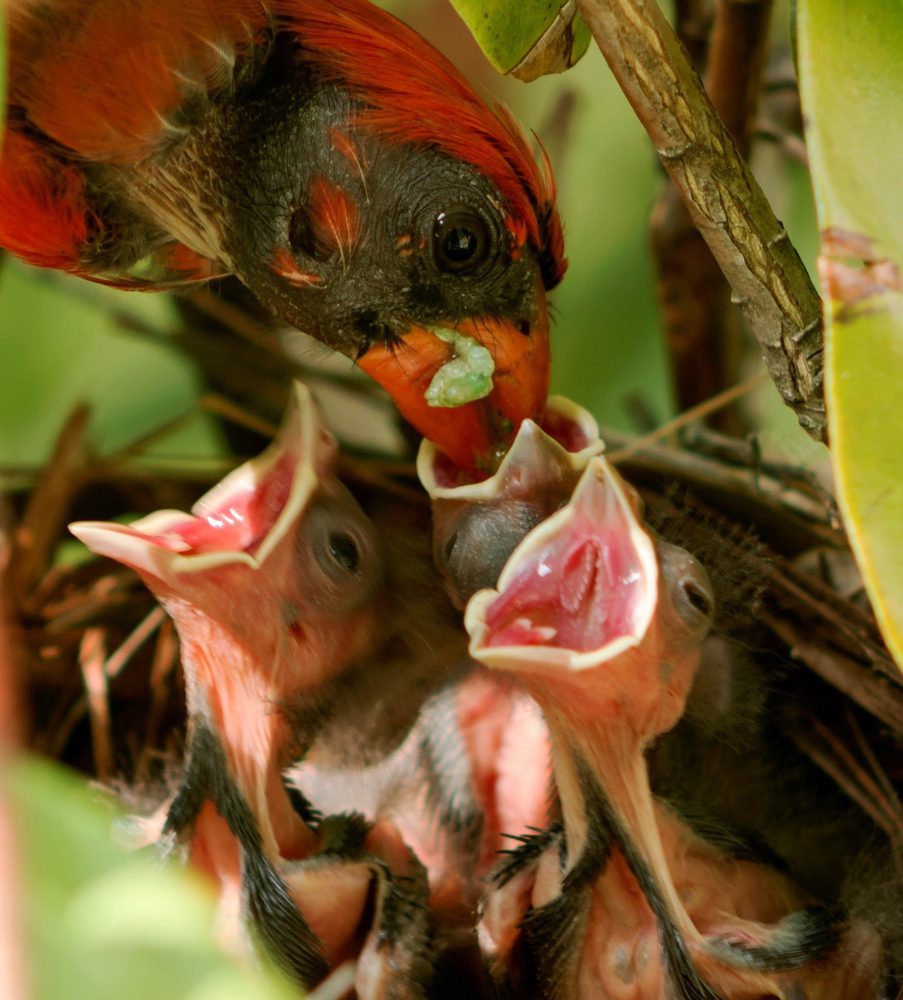Have you seen an enormous bird gliding low over head, perhaps with wings outspread and head tilted back? That could be a turkey vulture and their presence can often spark mixed feelings among residents – they look impressive with those large wings but feed off of dead animals, too.
Before dismissing them as creepy, however, you should know more. Turkey vultures play an integral part in maintaining an environmentally-friendly society by keeping things clean and safe for their hosts.
In this article, we’re going to learn everything we can about turkey vultures! From their unique abilities (yes! to their positive impact on Earth!) , to how important these birds are as clean-up machines – and perhaps changing your perception about these majestic birds altogether! You might just see turkey vultures differently.
Table of Contents
What is a Turkey Vulture?
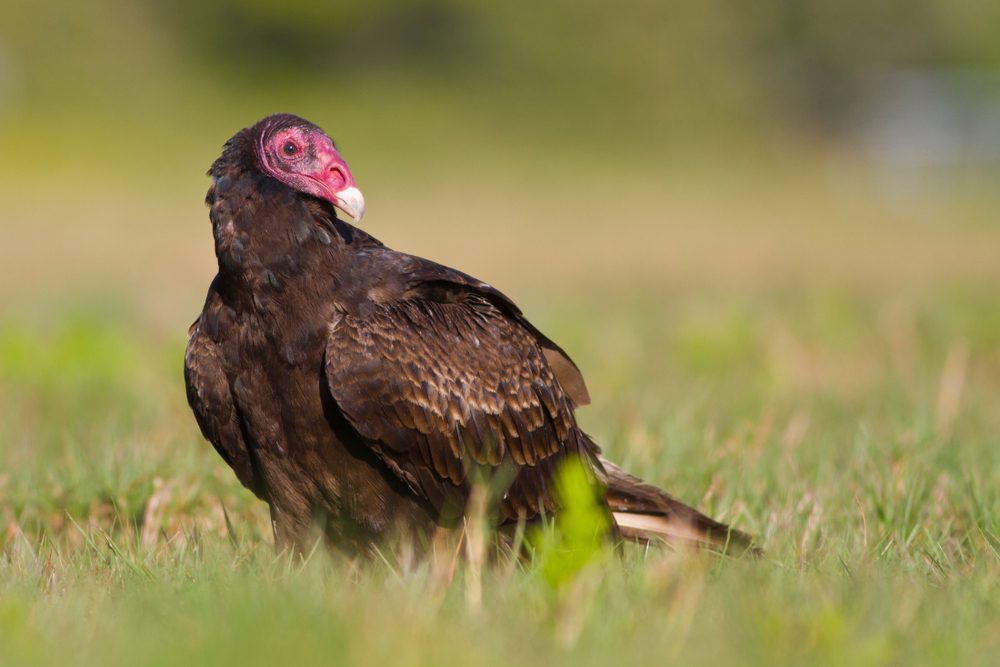
The turkey vulture (Cathartes aura) is a large bird of prey that is found throughout much of North America. As its name suggests, it resembles a turkey in profile, with a small bald red head, dark plumage, and a fan-shaped tail.
Turkey vultures are scavengers that play an important role in the ecosystem by cleaning up carrion. They have excellent senses of smell and eyesight which help them locate carcasses. Turkey vultures are social birds that roost and feed communally. They soar gracefully on thermals in the sky and use their keen senses to find food. Learning to identify turkey vultures is an important bird watching skill.
Physical Characteristics of Turkey Vultures
Turkey vultures have several key physical features that aid in identification:
- Dark brown or black plumage overall, except for gray flight feathers under the wings
- Bright red, featherless head that looks small compared to the body
- Ivory-colored, hooked beak
- Pinkish legs and feet
- Brown eyes
- Wrinkled skin on the head and neck
- Broad, long wings with a wingspan around 6 feet
Their dark coloration contrasts with their bare red head. Turkey vultures lack a voice box so they do not sing or call like other bird species. Their only vocalization is a hissing sound when threatened.
Identifying Turkey Vultures
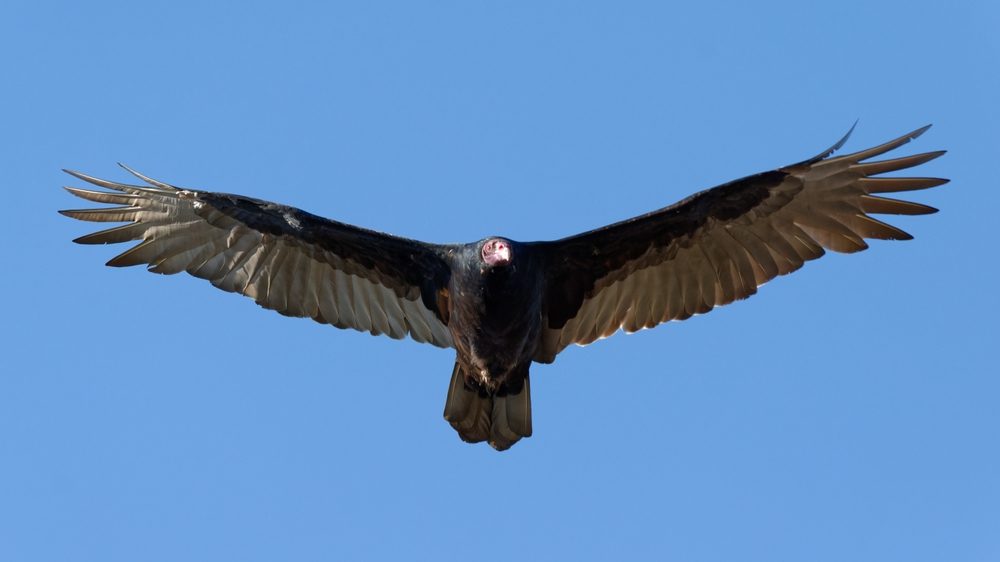
Size and Shape
Turkey Vultures are some of the largest birds found flying throughout North America, boasting wingspan of 6 feet wide when spread fully open, making them far larger than hawks but less enormous than eagles. Turkey Vultures have wide, long wings with short and spread out tails, when flying they hold their wings in an approximate V shape to keep air flowing over their entire bodies.
Comparison to Other Raptors
Have you look Turkey Vultures While Flying? Consider its physical appearance against other large birds such as Hawks or Eagles when trying to identify one in flight. Turkey vultures tend to fall somewhere in between–they are larger than hawks but not quite as massive as Eagles.
Relative Size Measurements
Turkey Vultures can range in length from 24-32 inches from head to tail and their wingspan ranges between 63-72 inches wide, typically weighing anywhere between 1.8 – 5.3 pounds (but young turkey Vultures might be smaller). You could use other birds such as crows or geese for comparison purposes and guess the size of any unknown ones you come across.
Color Pattern
Appearance from a Distance
When viewed from a distance, turkey vultures appear as mostly dark, blackish birds gliding high overhead. You may be able to see the paler underside of their wings as they angle them. Their small heads can be difficult to discern unless seen up close.
Dark Brown Plumage with Red Head and Pale Bill
In closer views, turkey vultures are identified by their dark brown or black body plumage contrasting with bright red heads. Their heads look small compared to their bulky bodies. Their bills are pale ivory or white. The skin on their heads and necks looks wrinkled and warty. You can check the video and audio of turkey vultures in this page.
Behavior and Habits of Turkey Vultures
Soaring and Flight Patterns
Turkey Vultures enjoy flying high up into the sky without much flapping of their wings, using warm air currents as support and may appear wobbly when taking flight. Sometimes you might see several flying together creating impressive patterns in the air!
Feeding Habits as Scavengers
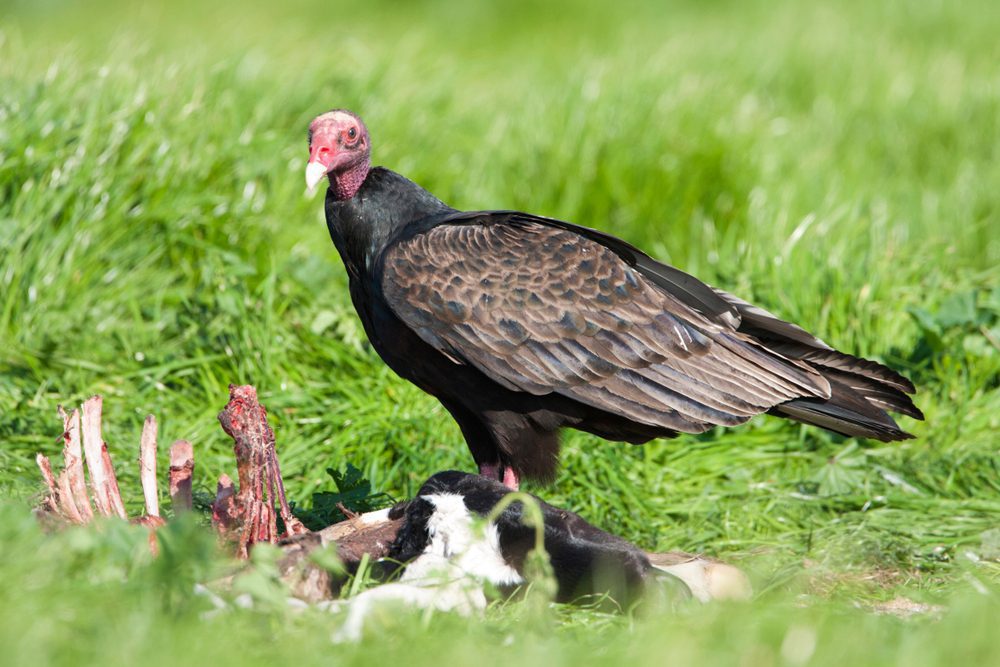
These birds possess an extraordinary talent: their sense of smell. With this ability at hand, they use it to locate food sources like dead animals along the roadsides or wooded areas – not live ones like hunters do, but rather by feasting upon dead ones they help clean up our environment by eating what’s already dead – usually appearing like they’re bent over their meal with delight as they feast upon it!
Sense of Smell for Finding Carcasses
Turkey Vultures stand out among birds as being unique due to their extraordinary sense of smell, which allows them to pick up on dead animal scent from far away and locate food hidden under trees quickly and effectively. They often arrive first at sites of dead bodies followed by other birds who don’t smell as keenly.
Distinguishing Male and Female Turkey Vultures
Lack of Sexual Dimorphism
Male and female turkey vultures resemble each other almost exactly, both sexes share similar feather colors and patterns, and usually possess approximately equal sizes, although sometimes female turkey vultures may have larger bodies than averages.
Physical Appearance and Plumage
Reproductive organs provide the only definitive method of telling male from female, looks alone are no indication. female might look more brown while male may appear darker – however this cannot always be determined through visual observation only.
Tips for Spotting Turkey Vultures
1. Looking for Specific Flight Patterns
If you are searching for Turkey Vultures in the sky, Look for large birds gliding with V-shaped wings pointed upward. Turkey Vultures do not fly directly, rather they tend to wobble more often than other predatory birds of prey.
2. Noticing Wing Positioning
Spot them by their brighter color when tilting or turning their wings – their silvery shade stands out among their mostly darker wings, flying with wings lifted slightly off of the ground.
3. Observing Circles and Thermals
Try looking out for large birds soaring higher on warm air currents, these could be turkey vultures! Their flight may appear wobbly compared with that of hawks or eagles, with some practice you’ll begin recognizing how they move.
You can learn more about turkey vulture location in here :
1. Turkey Vulture in Illinois
2. Turkey Vulture in Texas
3. Turkey Vulture in Wisconsin
4. Turkey Vulture Missouri
5. Turkey Vulture Arizona
6. Turkey Vulture Maryland
7. Turkey Vulture in Michigan
8. Turkey Vulture Virginia Habitats
9. Turkey Vulture Colorado
10. Turkey Vulture Georgia
11. Turkey Vulture Maine
You can learn more about turkey vulture comparison to other birds here :
1. Turkey Vulture vs Condor
2. Turkey Vulture vs Hawk
3. Black Vulture vs Turkey Vulture
4. Turkey Vulture vs Eagle
5. Buzzard vs Turkey vulture
You can learn more about Turkey Vulture facts here :
1. Turkey vulture sounds
2. Turkey vulture wingspan
3. Turkey Vulture Call
4. Turkey Vulture Behavior
5. Turkey Vulture Spiritual Meaning
6. Turkey Vulture Feathers
7. Turkey Vulture Migration
Conclusion
Final Thoughts on Turkey Vulture Identification
Spotting turkey vultures is all about noticing a few cool things about them. First off, they’re big birds with dark feathers and little red heads that stand out. When they fly, they hold their wings in a “V” shape, which looks pretty neat. They don’t fly straight but wobble around in the sky, often circling up high on warm air currents. Once you get the hang of it, you’ll be able to recognize how turkey vultures fly from far away. Watching them look for food is another great way to learn more about these interesting birds. You can check another bird guide in here : Bird Species identification

